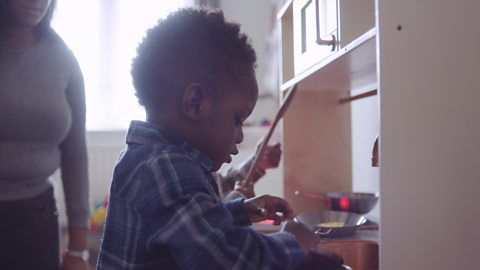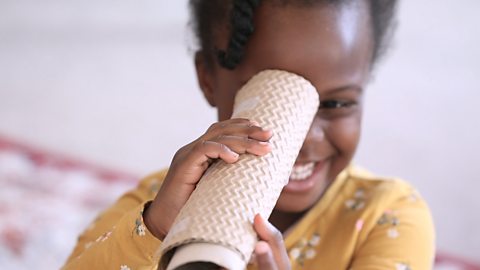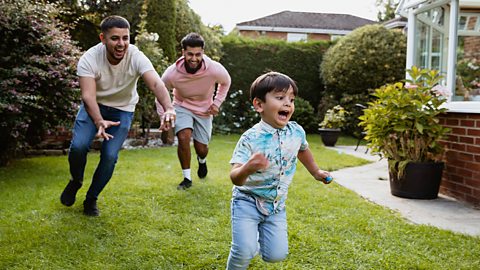With the Jewish High Holidays of Rosh Hashanah and Yom Kippur approaching at the end of September and beginning of October, we caught up with mum and founder of Karen Cinnamon, about how young children can learn about these holy days. She shares with us her experience of celebrating them with her kids when they were young.
When my first High Holiday season as a mother came around, I realised it was time to rethink my approach to the time of year a little.
I knew I wanted Rosh Hashanah and Yom Kippur to be meaningful days for every member of the family, at every stage of life - and while making ancient traditions relevant and fun for 21st century children takes some thought, it is definitely doable.
My two daughters - now seven and eight - look forward each year to the fun and exciting traditions we’ve created as a family, and as they grow and mature it’s such a joy helping them look deeper into the meaning of these festivals.
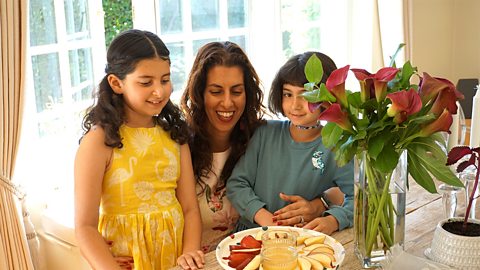
Marking Rosh Hashanah with kids
Rosh Hashanah, the Jewish New Year (literally ‘head of the year’), is certainly the easier of the two holidays to make child-friendly. On Rosh Hashanah we celebrate, reflect, and focus on new beginnings.
It is customary to dip apples in honey, symbolising the wish for a sweet new year. It’s also a time to sing, pray, get together with family, and of course, eat sweet treats and round challah (Jewish bread) to represent the circularity of the year.
The emphasis on sweet foods means it can be easy to get young children excited about Rosh Hashanah.
My husband and I love baking round challahs together with our girls, and we add in honey to make the bread extra sweet for a sweet new year. The girls also like to add colourful sprinkles, which has become a new family tradition for us! My daughters love the whole process, and they feel such pride when we use their challahs at the Rosh Hashanah table!
If you’re not a bread baker, making honey cake, arranging the apple slices nicely, or laying the table together are also great ways to get little ones excited for Rosh Hashanah.
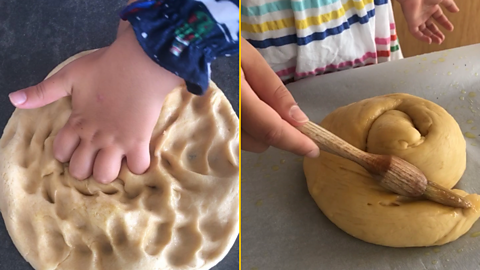
There’s also a fun tradition of eating a “new fruit” on the second night of Rosh Hashanah, something you haven’t had in a year or more (or ever!), on Rosh Hashanah - so to build excitement, you could take your children to the exotic fruit section of your local supermarket or greengrocers before the holiday and let them pick out their own “new fruit” to try.
When talking to our girls about Rosh Hashanah, we like to focus on the themes of reflection and looking ahead - our wishes for the new year (to be sweet, healthy, and happy) and what our priorities are. We also look back at the past year and think about what we’ve enjoyed and what might have been more of a challenge. For us, Rosh Hashanah is also a time to gather with extended family and celebrate togetherness.
Marking Yom Kippur with kids
Yom Kippur, the second of the High Holidays, is a bit more challenging to make accessible to young children - but with a little work, it can be just as meaningful for little ones as Rosh Hashanah.
Known as the Jewish Day of Atonement, Yom Kippur is the most solemn day of the Jewish year.
While my girls are too young for some of the rituals associated with Yom Kippur, like fasting, I’ve found this holiday is a wonderful opportunity to explore with them the value of saying 'I'm sorry' and 'How can we do better?'
We set aside some time on the day to talk about our actions and behaviour over the past year, and moments or events that we wish we’d handled differently. We talk about anything that we would like to apologise for and what different ways there are to show someone we are sorry.
Celebrating the High Holidays is not just about thinking how we can improve ourselves, but also the world around us, in the coming year. One year, during the High Holiday season, I took the girls to visit a local Jewish old age home and engage with some of the residents there.
Other activities that can add meaning to Yom Kippur for young children are attending children’s services at a synagogue or going for a walk with other Jewish families. Reading the story of Jonah and the Whale is a traditional Yom Kippur afternoon activity.
While Yom Kippur doesn’t present the same opportunities for engagement through food that Rosh Hashanah does, children can still help with preparing the Seudah Hamafseket (pre-fast meal), as well as the breaking-the-fast meal. Either of these meals can be a wonderful time to discuss our hopes and goals for the New Year.
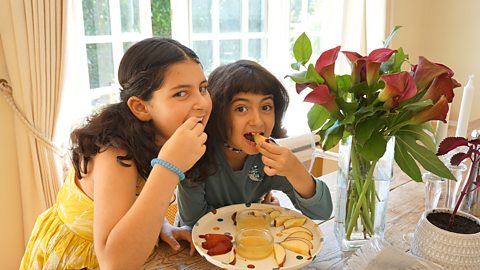
The High Holidays with young children may need to look a little different than what you’re used to, but done in your own unique family way, they are an incredible opportunity for learning about Jewish tradition, absorbing Jewish values, and cementing Jewish identities.
Our High Holiday celebrations have prompted all kinds of questions from my girls over the years - questions like ‘why do we eat certain foods?’, ‘what is the lunar calendar?’, and whether we only pray when we are in synagogue.
The questions they've asked have led to some of our deepest and most meaningful discussions about what it means to be part of the Jewish people.

